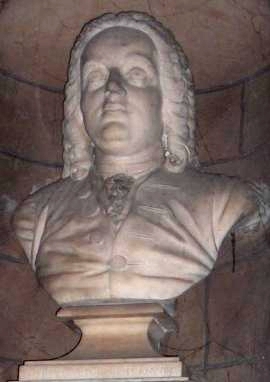
Sir Charles Algernon Parsons, was a British engineer, best known for his invention of the compound steam turbine, and as the eponym of C. A. Parsons and Company. He worked as an engineer on dynamo and turbine design, and power generation, with great influence on the naval and electrical engineering fields. He also developed optical equipment for searchlights and telescopes.

Birr is a town in County Offaly, Ireland. Between 1620 and 1899 it was called Parsonstown, after the Parsons family who were local landowners and hereditary Earls of Rosse.

Earl of Rosse is a title that has been created twice in the Peerage of Ireland, both times for the Parsons family. "Rosse" refers to New Ross in County Wexford.

William Parsons, 3rd Earl of Rosse, was an Irish astronomer, naturalist, and engineer. He was president of the Royal Society (UK), the most important association of naturalists in the world in the nineteenth century. He built several giant telescopes. His 72-inch telescope, built in 1845 and colloquially known as the "Leviathan of Parsonstown", was the world's largest telescope, in terms of aperture size, until the early 20th century. From April 1807 until February 1841, he was styled as Baron Oxmantown.
William Parsons may refer to:

Lawrence Parsons, 4th Earl of Rosse, KP, FRS was a member of the Irish peerage and an amateur astronomer. His name is often given as Laurence Parsons.

Birr Castle is a large castle in the town of Birr in County Offaly, Ireland. It is the home of the 7th Earl of Rosse and his family, and as the castle is generally not open to the public, though the grounds and gardens of the demesne are publicly accessible, and include a science museum and a café, a reflecting telescope which was the largest in the world for decades and a modern radio telescope.

Laurence Michael Harvey Parsons, 6th Earl of Rosse, KBE was an Anglo-Irish peer.

William Edward Parsons, 5th Earl of Rosse was an Irish peer and British Army officer. He was known as Lord Oxmantown until 1908.

Lawrence Parsons, 2nd Earl of Rosse, known as Sir Lawrence Parsons, Bt, from 1791 to 1807, was an Irish peer.

Richard Parsons, 1st Earl of Rosse, Freemason and a founder-member of the Hell-Fire Club, 2nd Viscount Rosse of Bellamont co. Dublin, Baron Oxmantown, 3rd baronet.
There have been four baronetcies created for people with the surname Parsons, two in the Baronetage of Ireland, one in the Baronetage of England and one in the Baronetage of the United Kingdom. One creation is still extant as of 2008.

Mary Parsons, Countess of Rosse, was an Anglo-Irish amateur astronomer, architect, furniture designer, and pioneering photographer. Often known simply as Mary Rosse, she was one of the early practitioners of making photographs from waxed-paper negatives.
Lawrence Harman Parsons, 1st Earl of Rosse, known as The Lord Oxmantown between 1792 and 1795 and as The Viscount Oxmantown between 1795 and 1806, was an Anglo-Irish peer and politician.
Sir William Parsons, 1st Baronet of Bellamont, PC (Ire), was known as a "land-hunter" expropriating land from owners whose titles were deemed defective. He also served as Surveyor General of Ireland and was an undertaker in several plantations. He governed Ireland as joint Lord Justice of Ireland from February 1640 to April 1643 during the Irish rebellion of 1641 and the beginning of the Irish Confederate War.
Sir Gerard Lowther (1589–1660), sometimes referred to as Gerald Lowther, was a member of the well-known Lowther family of Westmoreland. He had a distinguished judicial career in Ireland, becoming Chief Justice of the Irish Common Pleas, although his enemies claimed his success was due to a complete lack of moral principles.

Anne Parsons, Countess of Rosse, was an English socialite and one of the founders of The Victorian Society. She was the mother of Antony Armstrong-Jones, 1st Earl of Snowdon and Brendan Parsons, 7th Earl of Rosse.
Anthony Peter William Malcomson is an archivist and historian specialising in the history of the Anglo-Irish ascendancy. He was educated at Campbell College, Belfast, and Emmanuel College, Cambridge. He completed his post graduate studies at Queen's University and was awarded his Ph.D. in history in 1970. Most of his working life was spent in the Public Record Office of Northern Ireland, of which he was director from 1988 until his retirement in 1998.
Robert Bermingham Clements, 4th Earl of Leitrim DL was an Irish soldier and nobleman.
Sir Lawrence Parsons was an English-born barrister, judge and politician in seventeenth-century Ireland, who enjoyed a highly successful career, despite frequent accusations of corruption and neglect of official duty. His success owed much to the patronage of his uncle Sir Geoffrey Fenton, of his cousin by marriage Richard Boyle, 1st Earl of Cork, and of the prime Royal favourite, the Duke of Buckingham. He was the ancestor of the Earl of Rosse of the second creation. He rebuilt Birr Castle, which is still the Parsons family home.











